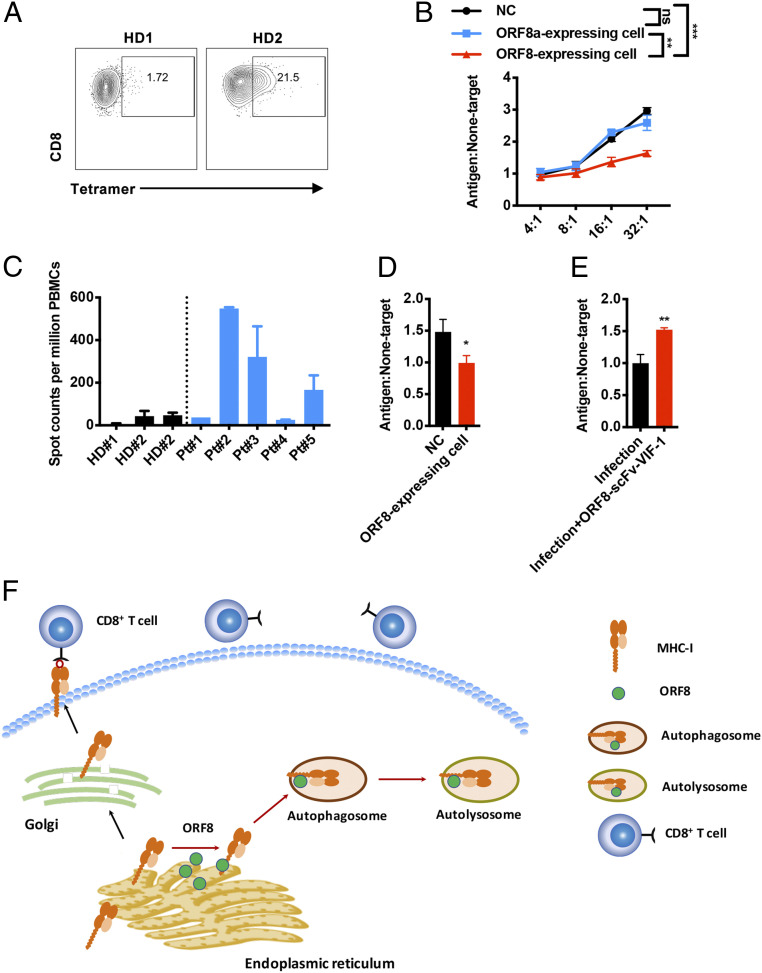Fig. 6.
ORF8-mediated resistance of SARS-CoV-2 to antiviral CTLs. (A) Frequency of SSp-1–specific CD8+ T cells (gated on CD8+ cells) generated from HLA-A2+ healthy donors (HD). (B) Killing assay using SSp-1–specific CD8+ T cells generated form HD. CTLs were cocultured with SSp-1 peptide–loaded HEK293T cells (antigen), or with HIV-gag peptide (SL9)-loaded HEK293T cells (nontarget) overnight. The ratios of dead target versus nontarget cells (antigen: nontarget) were determined by flow cytometry. (C) IFN-γ ELISpot analysis of COVID-19 recover patients (Pt) to synthetic peptides, compared to HD. (D) Killing assay using CD8+ T cells from HLA-A2+ COVID-19–recovered Pt 3. Activated CTLs were cocultured with SARS-CoV-2 peptide –loaded HEK293T cells (antigen) or with HIV-gag peptide–loaded HEK293T cells (nontarget) at effector: target ratio 8:1. The ratios of dead target versus nontarget cells (antigen: nontarget) were determined by flow cytometry (n = 5). (E) Killing assay for authentic SARS-CoV-2–infected HEK293T/Hace2 cells using SSp-1–specific CD8+ T cells generated form HD. CTLs were cocultured with infected HEK293T/Hace2 cells (antigen) or uninfected cells (nontarget) at effector: target ratio 30:1. The ratios of dead target versus nontarget cells (antigen: nontarget) were determined by flow cytometry. (F) Schematics showing that ORF8 mediates MHC-Ι lysosome degradation through an autophagy-dependent pathway. In SARS-CoV-2–infected cells, ORF8 directly binds to the MHC-Ι molecule, facilitating its trafficking to autophagosome for lysosome degradation. The data were shown as mean ± SD (error bars). Student’s t test was used. P < 0.05 indicates statistically significance difference; *P < 0.05; **P < 0.01; ***P < 0.001.

